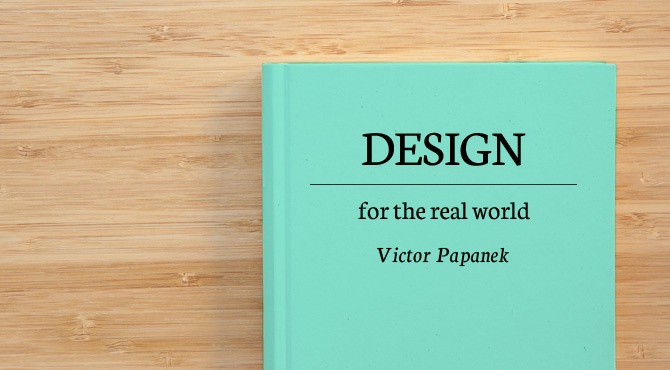 From the time I was a kid I was drawn to the world of design. When I graduated high school, I went straight to art college where I intended to pursue a career in product design. Then I discovered Victor Papanek.
From the time I was a kid I was drawn to the world of design. When I graduated high school, I went straight to art college where I intended to pursue a career in product design. Then I discovered Victor Papanek.
Papanek was a renowned product designer in the 1970s, who drew the outrage of the entire design community with his book Design for the Real World: Human Ecology and Social Change. The book lambasts the design community, for creating a consumer culture through the creation of tawdry, unsafe, frivolous, and useless product in a world with limited natural resources. The book got him banned from industry associations and had his designs removed from museums.
It also became one of the mostly widely read books on design. And when I discovered it in art college, it changed my entire view of the design industry.
I felt like I couldn’t pursue the career path I’d aspired to since childhood, and I even went to my product design professor and told him I had to change majors. Fortunately he talked me down, by suggesting that rather than quitting the field, I attempt to change it from within by designing useful quality things that people actually needed. His advice helped shape my career and how I think about the need for design. It’s also helped me recognize the obstacles companies face in creating a culture where innovative thinking can thrive.
What is Good Design?
After college, I took a job at an international telecommunications company where I joined a small group that was the beginning of the company’s efforts to create an innovation ecosystem. We were our own self-contained team of innovators who were deployed to fix struggling products. We would run 12-week innovation sprints to identify the problem, iterate solutions and capture feedback.
But on these projects, we often found that the original idea was not tied to any customer need or problem that needed solving, which meant no amount of iterative brainstorming could fix it. Because good design is not about design things the right way, it’s about designing the right things.
So we suggested that the company give us the time and resources to devise our own project ideas, and let them choose the ones that made the most sense. We scanned the industry for big ideas, and met with customers to figure out what problems they needed solving. Then we built prototypes for digital tools that would make it easier for them to purchase goods and access entertainment.
But for the most part, those projects never got off the ground, because at the time the company didn’t have the systems in place to translate good ideas into real world products.
Over time the company continued to evolve and it is now known for having a strong innovative culture, but at the time it was frustrating. They invested in building a team who could produce great ideas, but they didn’t change the decision-making processes that determined which products got built.
Innovation is a way of life
This is a common mistake companies make when they are looking for a quick path to innovation. Building a self-contained group of innovators seems like an easy way to rapidly infuse the company with innovative thinking, but without organizational change to promote and support their ideas, it would generate real change.
To generate real sustainable change that drives innovation through the company, business leaders need to take a hard look at the entire corporate environment, and identify where there are bottlenecks that crush good ideas. Looking at how ideas are generated, what criteria are required for funding new projects, and how project teams interact with customers during the project design lifecycle can begin to provide insights into where change is needed.
Once you’ve identified these obstacles, you can begin to make changes that will allow great ideas to transform your organization.